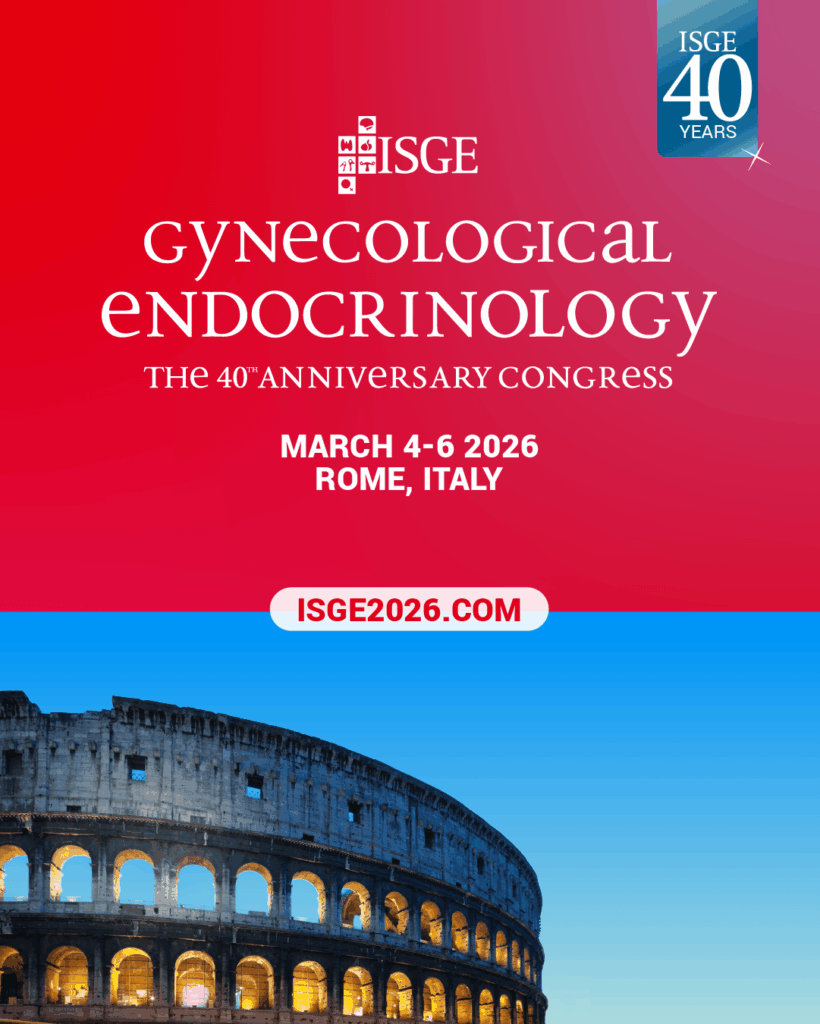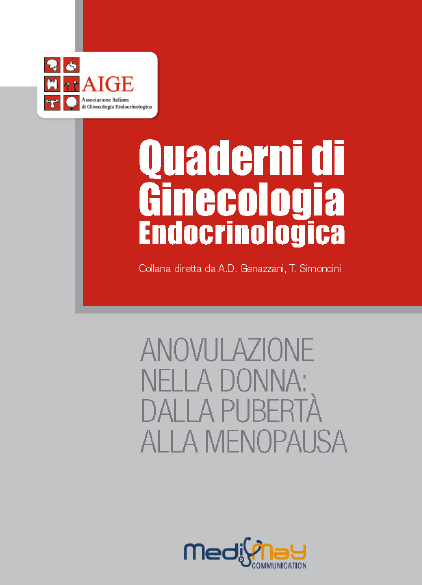-
JUAN BALASCH
Ageing and infertility: an overview
Gynecological Endocrinology, December 2010; 26(12): 855–860
Abstract
In many modern societies, the proportion of women who delay childbearing beyond the age of 35 years has increased greatly in recent decades. They are falsely reassured by popular beliefs that advances in new reproductive technologies can compensate for the age-realted decline in fertility, but science cannot beat the biological clock. Age is the single most important determinant of male and female fertility, either natural or treated. The consequences of advancing maternal age are not only for the risk of natural and assisted conception, but also for the outcome of pregnancy. Female fertility has a ‘bestbefore date’ of 35, and for men, it is probably before age 45–50.
Conclusion Further studies should be organised in order to evaluate the role of PCOS in pregnancy.
-
LOURDES IBAEN EZ, ABEL LO´ PEZ-BERMEJO, MARTA DI´AZ, GOYA ENRI´QUEZ, LUIS DEL RIO, FRANCIS DE ZEGHER
Low-dose pioglitazone, flutamide, metformin plus an estro-progestagen for non-obese young women with polycystic ovary syndrome: increasing efficacy and persistent safety over 30 months
Gynecological Endocrinology, December 2010; 26(12): 869–873
Abstract
Context. Therapy of androgen excess should not only confer cosmetic benefit, but also improve long-term markers of endocrine-metabolic and cardiovascular health. Here we report on our pilot experience with a low-dose polytherapy for 30 months.
Design. Patients, Intervention. Unblinded extension (24–30 months) of a double-placebo study exploring low-dose polytherapy over 24 months. Between 24 and 30 months, women with hyperinsulinemic androgen excess (N¼36; mean age: 19.4 year; BMI: 23.7 kg/m2) received metformin (850 mg/day), flutamide (62.5 mg/day), pioglitazone (7.5 mg/day),
ethinylestradiol (20 mg/day) plus drospirenone (3 mg/day) for 24/28 days.
Main Outcomes. Carotid IMT, body composition (by absorptiometry), abdominal fat (by magnetic resonance), hirsutism score, fasting glycaemia, insulin, androgens, HDL cholesterol, C-reactive protein and hepatic safety indices.
Results. Low-dose polytherapy for 30 months was not accompanied by a change in body weight or bone mineral density, but it was associated with a marked rise of insulin sensitivity (p<0.00001), with a loss of visceral fat (mean:727%; p<0.00001) and with a lowering of IMT (70.16 mm; p<0.00001). Aspartate aminotransferase, gamma-glutamyl
transferase and lactate dehydrogenase levels decreased slightly over 30 months.
Conclusion. Low-dose polytherapy (24/28 day) with pioglitazone, flutamide, metformin and estro-progestagen was found to improve, without changing weight, a spectrum of long-term health markers in young women with hyperinsulinemic androgen
excess.
-
D. W. Sturdee and N. Panay
Recommendations for the management of postmenopausal vaginal atrophy
CLIMACTERIC 2010;13:509–522
Abstract
Unlike hot flushes and night sweats which resolve spontaneously in time, atrophic symptoms affecting the vagina and lower urinary tract are often progressive and frequently require treatment. The prevalence of vaginal dryness increases as a woman advances through the postmenopausal years, causing itching, burning and dyspareunia, and sexual activity is often compromised. But, despite the various safe and effective options, only a minority (about 25% in the Western world and probably considerably less in other areas) will seek medical help. Some of this reluctance is due to the adverse publicity for hormone replacement therapy (HRT) over recent years that has suggested an increased risk of breast cancer, heart disease and stroke. But, regardless of whether these scares are justified, local treatment of vaginal atrophy is not associated with these possible risks of systemic HRT. Other reasons for the continued suffering in silence may be cultural and an understandable reluctance to discuss such matters, particularly with a male doctor, but the medical profession must also take much of the blame for failing to enquire of all postmenopausal women about the possibility of vaginal atrophic symptoms.
Vaginal dryness can be helped by simple lubricants but the best and most logical treatment for urogenital atrophy is to use local estrogen. This is safe, effective and with few contraindications. It is hoped that these guidelines and recommendations, produced to coincide withWorld Menopause Day 2010, will help to highlight this major cause of distress and reduced quality of life and will encourage women and their medical advisers all over the world to seek and provide help.
-
M. Waaseth, M. Nakling, K. Bakken, S. Grimsgaard
Use of dietary supplements and medication among postmenopausal women with vasomotor symptoms
CLIMACTERIC 2010;13:585–593
Abstract
Objectives To assess how postmenopausal women with severe vasomotor symptoms who volunteer for an acupuncture trial (ACUFLASH) differ from the general population (the Norwegian Women and Cancer study, NOWAC); and to describe the use of dietary supplements and medication during trial intervention and follow-up.
Methods Questionnaire data on postmenopausal women regarding demography and use of dietary supplements and medication were compared between the ACUFLASH trial (baseline, 2006–2007, n¼267) and the NOWAC study (2004–2005, n¼331). Additionally, the trial intervention groups, acupuncture and self-care (n¼134) or self-care alone (n¼133), were compared regarding supplements and medication use.
Results The prevalence of dietary supplement use was higher among women with severe vasomotor symptoms (83.9%) than in the population-based sample (74.3%), with particularly extensive use of cod liver oil. The prevalence of medication use was 46.4% in ACUFLASH and 55.0% in NOWAC. Trial participants reported poorer self-reported health, higher education level and tended to be former oral contraceptive users and smokers. At trial baseline, 48.5% of the acupuncture group and 60.3% of the self-care group used dietary supplements (p40.05), while 48.5% in the acupuncture group and 45.0% in the self-care group used medication (p40.05). Use of supplements for vasomotor symptoms increased significantly in the self-care group at 12 weeks, while it remained unchanged in the acupuncture group. Hormone therapy use increased significantly in both groups after intervention.
Conclusion Postmenopausal women suffering severe vasomotor symptoms used more dietary supplements than the general population. They also had poorer self-reported health, but their medication use was similar to that of the general population. Acupuncture did not influence use of dietary supplements in the randomized intervention.
-
Kawaljit Kaur Khokhar, Sharda Sidhu, Gurcharan Kaur
Correlation between leptin level and hypertension in normal and obese pre- and postmenopausal women
European Journal of Endocrinology, Vol 163, Issue 6, 873-878
Abstract
Objective: The present study was aimed at evaluating the correlation between leptin and hypertension in normal and obese hypertensive pre- (Pre-M) and postmenopausal (Post-M) women of Jalandhar city (Punjab, India).
Design: For the present study, 78 Pre-M and Post-M women were recruited in four categories as follows: i) normal normotensive, ii) obese normotensive, iii) normal hypertensive, and iv) obese hypertensive. Body mass index was considered as the index of obesity. Guidelines given by JNC-VII were followed for the assessment of hypertension. Leptin was assayed by sandwich ELISA, and estradiol (E2) was assayed by competitive ELISA.
Results: Leptin level was found to be significantly higher in normal Pre-M women (P<0.02) than that of normal Post-M women. Obese subjects had significantly higher leptin level (P<0.001) than the normal women. In the case of hypertensive subjects, leptin level was significantly higher than that of normotensive counterparts. E2 level was found significantly lower in Post-M women (P<0.001) than that of Pre-M women as well as in hypertensive women than that of normotensive subjects. A positive correlation was observed between blood pressure (BP) and leptin, but significant association was observed in hypertensive normal and obese Pre-M and Post-M women only.
Conclusion: It is concluded from the present findings that leptin contributes to the regulation of BP in hypertensive normal as well as in the obese Pre-M and Post-M women. So, leptin may be a regulator of BP in hypertensive women independent of the degree of obesity and the menopausal status.
-
Konstantinos G. Michalakis, James H. Segars
The role of adiponectin in reproduction: from polycystic ovary syndrome to assisted reproduction
Fertil Steril 94: 1949-1957, 2010
Abstract
Objective To summarize the effects of the adipokine adiponectin on the reproductive endocrine system, from the hypothalamic-pituitary axis to the gonads and target tissues of the reproductive system.
Design A Medline computer search was performed to identify relevant articles.
Setting Research institution.
Intervention(s) None.
Result(s) Adiponectin is a hormone secreted by adipose tissue that acts to reduce insulin resistance and atherogenic damage, but it also exerts actions in other tissues. Adiponectin mediates its actions in the periphery mainly via two receptors, AdipoR1 and AdipoR2. Adiponectin receptors are present in many reproductive tissues, including the central nervous system, ovaries, oviduct, endometrium, and testes. Adiponectin influences gonadotropin release, normal pregnancy, and assisted reproduction outcomes.
Conclusion(s) Adiponectin, a beneficial adipokine, represents a major link between obesity and reproduction. Higher levels of adiponectin are associated with improved menstrual function and better outcomes in assisted reproductive cycles.
-
Nikolaos P. Polyzos,Christina I. Messini, Evangelos G. Papanikolaou, Davide Mauri, Spyridon Tzioras, Ahmed Badawy, Ioannis E. Messinis
Vaginal progesterone gel for luteal phase support in IVF/ICSI cycles: a meta-analysis
Fertil Steril 94: 2083-2087, 2010
Abstract
Objective To investigate whether vaginal progesterone gel may result in similar or higher pregnancy rates compared with all other vaginal progesterone forms when used for luteal-phase support.
Design Meta-analysis of randomized controlled trials using odds ratios (OR) and 95% confidence intervals (CI).
Patient(s) Infertile women undergoing IVF or ICSI.
Intervention(s) Vaginal progesterone gel 90mg once or twice daily versus any other vaginal progesterone form for luteal phase support.
Main Outcome Measure(s) Clinical pregnancy rates.
Result(s) Seven randomized controlled trials, involving 2,447 patients, were included in the analysis. No difference was observed in the overall clinical pregnancy rate when comparing vaginal progesterone gel with any other vaginal progesterone form. Moreover, clinical pregnancy rates were similar in protocols using only GnRH agonists and when comparing vaginal gel with the traditional treatment of 200 mg × 3 vaginal progesterone capsules.
Conclusion(s) This meta-analysis provides solid evidence that no significant difference exists between vaginal gel and all other vaginal progesterone forms in terms of clinical pregnancy rates
-
Hamdy Azab, Waleed El-Khayat, Adel Nada, Eman El-Khattan, Ahmed M. Abou-Setta
The effectiveness of clomiphene citrate in LH surge suppression in women undergoing IUI: a randomized controlled trial
Fertil Steril 94: 2167-2171
Abstract
Objective To study the effectiveness of clomiphene citrate (CC) in preventing a premature LH surge during controlled ovarian stimulation in women undergoing assisted reproduction.
Design Prospective, randomized, controlled trial.
Setting University hospital.
Patient(s) Two-hundred thirty couples with mild male factor, or unexplained infertility.
Intervention(s) Couples were randomized to receive human menopausal gonadotrophins (hMG) followed by CC or hMG alone until the day of hCG.
Main Outcome Measure(s) The primary outcomes were the incidence of a clinical pregnancy and premature LH rise. Secondary outcomes were the E2 levels, number of mature follicles, and endometrial thickness as determined on the day of hCG.
Result(s) The number of patients who had a premature LH surge was significantly lower in the hMG + CC group (5.45% vs. 15.89%). Additionally, the mean E2 levels (pg/mL) and the number of mature follicles were also significantly higher in the hMG + CC group (360.3 ± 162.9 vs. 280 ± 110.0 and 2.4 ± 0.97 vs. 1.3 ± 1.1, respectively), although there was no significant difference regarding number of canceled cycles, endometrial thickness, or clinical pregnancy rate.
Conclusion(s) The addition of CC to hMG has been proven to be effective in reducing premature LH surges without compromising the pregnancy rate.
-
Didier Dewailly, Pascal Pigny, Benoît Soudan, Sophie Catteau-Jonard, Christine Decanter, Edouard Poncelet, Alain Duhamel
Reconciling the Definitions of Polycystic Ovary Syndrome: The Ovarian Follicle Number and Serum Anti-Mu¨ llerian Hormone Concentrations Aggregate with the Markers of Hyperandrogenism
J Clin Endocrinol Metab 95: 4399–4405, 2010
Abstract
Context: It is still debated whether clinical and/or biological indices of hyperandrogenism (HA)
should be present to qualify a patient as having polycystic ovary syndrome (PCOS). We hypothesized that excessive follicle number (FN) assessed by ovarian ultrasonography and/or serum anti-Mu¨ llerian hormone (AMH) concentrations may be used as surrogates for the classical markers of HA.
Design and Methods: Data were obtained from a database of clinical, hormonal, and ultrasound features that were consecutively recorded in 270 women with PCOS (defined using the Rotterdam Criteria) and 217 infertile nonhyperandrogenic normoovulatory women. These variables were submitted to principal component analysis, a multivariable statistical procedure that transforms a number of possibly correlated variables into a smaller number of uncorrelated variables called principal components (PC). Variables that aggregate in the same PC capture the same information.
Results: In the control group, as expected, three independent PCs were identified: 1) the markers of the metabolic (i.e. insulin resistance) status; 2) those of the androgen status; and 3) those of the follicle status. In the PCOS group, the metabolic variables also aggregated in a first PC. Ovarian androgen and follicle markers aggregated in a second independent PC, with FN and serumAMH having the strongest correlation coefficients. A third PC summarized the adrenal contribution to the HA of PCOS. In both groups, the free androgen index correlated equally to the first and second PCs.
Conclusions: The similarity of the first PC between controls and PCOS supports the hypothesis that the metabolic anomaly of PCOS is neither intrinsic nor specific. Conversely, by gathering the androgen and follicle variables, the second PC in PCOS may be viewed as summarizing a specific ovarian anomaly. Because both FN and/or serum AMH were strongly correlated to the second PC along with androgens, they may be used equally as surrogates for the classical markers of ovarian HA. This reconciles the Rotterdam Consensus and other definitions for PCOS, especially in women having the Rotterdam PCOS phenotype without HA. We thus propose a simple strategy for the diagnosis of PCOS in clinical practice.
-
Claes Ohlsson, Fernand Labrie, Elizabeth Barrett-Connor, Magnus K. Karlsson, Osten Ljunggren, Liesbeth Vandenput, Dan Mellstrom, Åsa Tivesten
Low Serum Levels of Dehydroepiandrosterone Sulfate Predict All-Cause and Cardiovascular Mortality in Elderly Swedish Men
J Clin Endocrinol Metab 95: 4406–4414, 2010
Abstract
Context: The age-related decline in dehydroepiandrosterone (DHEA) levels is thought to be of importance for general and vascular aging. However, data on the association between DHEA and mortality are conflicting.
Objectives: We tested the hypothesis that low serum DHEA and DHEA sulfate (DHEA-S) levels
predict all-cause and cardiovascular disease (CVD) death in elderly men.
Design, Setting, and Participants: We used gas/liquid chromatography-mass spectrometry to analyze baseline levels ofDHEAand DHEA-S in the prospective population-basedMrOSSweden study (2644 men, aged 69–81 yr). Mortality data were obtained from central registersandanalyzed using Cox proportional hazards regressions.
Main Outcome Measures: All-cause and CVD mortality by serum DHEA(-S) levels.
Results: During a mean 4.5-yr follow-up, 328 deaths occurred. Low levels of DHEA-S (quartile 1 vs. quartiles 2–4), predicted death from all causes [hazard ratio (HR) 1.54,95%confidence interval (CI) 1.21–1.96; adjusted for traditional cardiovascular risk factors], from CVD (n _ 123 deaths; HR 1.61, 95% CI 1.10–2.37) and ischemic heart disease (n _ 73; HR 1.67, 95% CI 1.02–2.74) but not cancer. Analyses with DHEA gave similar results. The association between low DHEA-S and CVD death remained after adjustment for C-reactive protein and circulating estradiol and testosterone levels. When stratified by the median age of 75.4 yr, the mortality prediction by low DHEA-S was more pronounced among younger (age adjusted HR for CVD death 2.64, 95% CI 1.37–5.09) than older men (HR 1.30, 95% CI 0.83–2.04).
Conclusions: Low serum levels of DHEA(-S) predict death from all causes, CVD, and ischemic heart disease in older men.
-
B. Delia Johnson, Kathleen M. Dwyer, Frank Z. Stanczyk, Vera Bittner, Sarah L. Berga, Glenn D. Braunstein, Ricardo Azziz, YuChing Yang, Georgina E. Hale, and C. Noel Bairey Merz
The Relationship of Menopausal Status and Rapid Menopausal Transition with Carotid Intima-Media Thickness Progression in Women: A Report from the Los Angeles Atherosclerosis Study
J Clin Endocrinol Metab 95: 4432–4440, 2010
Abstract
Context: The onset of menopause has been associated with an increase in cardiovascular risk
factors. However, little information is available about the rapidity of the menopausal transition
and its relationship to the development of preclinical cardiovascular disease (CVD).
Objective: Our objective was to assess whether the rate of carotid intima-media thickness (cIMT) progression over time differs according to 1) menopausal status and 2) rapidity of the menopausal transition.
Design: We evaluated 203 community-based women aged 45–60 yr without previously diagnosed CVD who underwent three repeated measurements of cIMT as a measure of preclinical CVD over 3 yr. Menopausal status was ascertained at each visit based on menstrual cycle parameters and reproductive hormone profiles. Of these, 21 remained premenopausal, 51 transitioned, and 131 were postmenopausal throughout the observation period.
Results: Age-adjusted cIMT progression rates were similar among premenopausal, transitioning, and postmenopausal women. In the 51 transitioning women, age was not related to rate of cIMT progression. However, the rapidity of menopausal transition was related to cIMT progression: women transitioning from pre- to postmenopause within the 3-yr period had a higher rate of cIMT progression compared with women with a slower transition. Statistical adjustments for the significant covariates of systolic blood pressure, body mass index, race, cigarette smoking, orhormone therapy use did not alter the findings.
Conclusions: Among healthy women undergoing repeated cIMT measurement, a more rapid menopausal transition was associated with a higher rate of preclinical CVD progression measured by cIMT. Further work is needed to explore potential mechanisms of this effect






